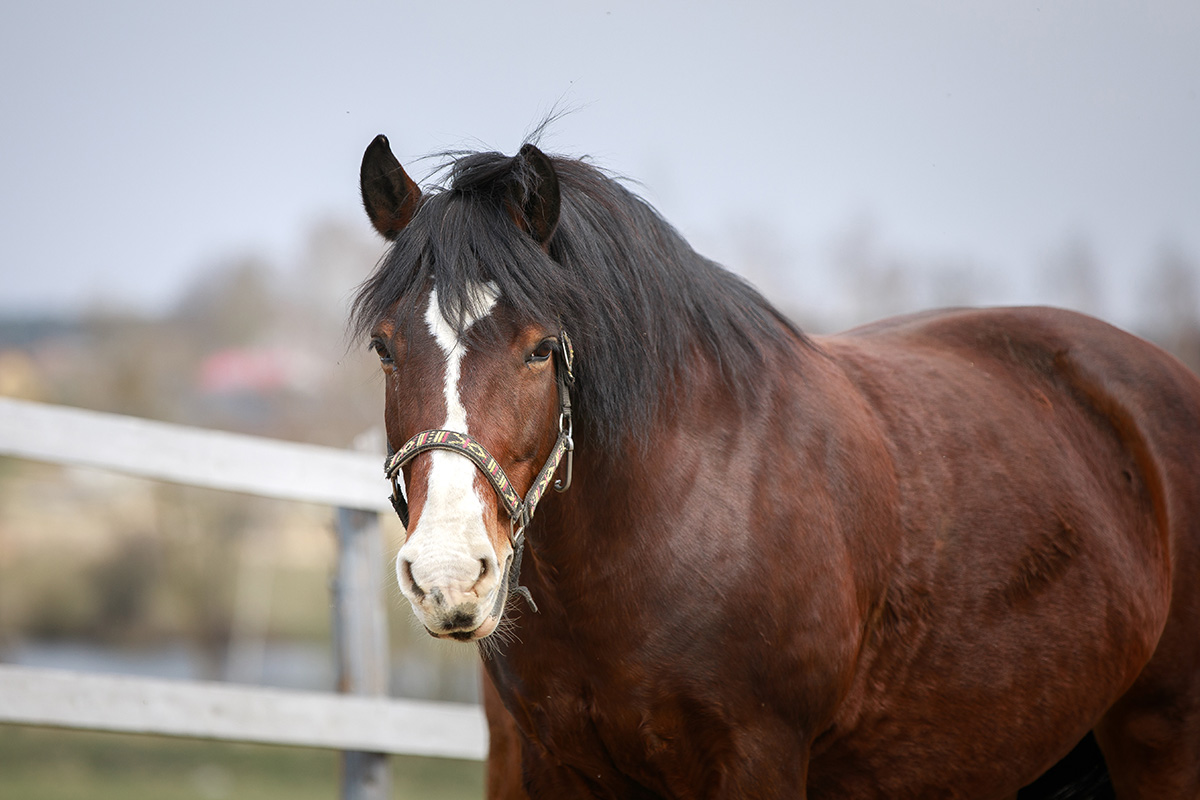
Although a nice, plump horse or pony may look adorable, all that extra weight is actually a health time bomb. Extra weight puts more strain on his joints and is also the main contributor to developing equine metabolic syndrome (EMS). EMS generally entails insulin resistance and chronic laminitis. That’s why it’s crucial to have the proper feeding program for an easy keeper.
While some horses are just born with an “air fern” gene that you can’t change, there is still plenty you can do on the dietary side of the calorie equation to keep him from suffering unnecessary health problems.
Special Diet for an Easy Keeper
When feeding an easy keeper, there are three main calorie bombs that will keep him obese. Think carefully about your horse’s diet: is he getting any of these? Calorie-dense hay; grain/sweet feed; or pasture.
Hay: Easy keepers should not get any alfalfa hay, which is more calorie-dense than grass hay. If you’re already feeding grass hay and still battling the bulge, try feeding a more mature hay (less soft and leafy, slightly more stemmy), while still keeping an eye on the quality (free of weeds and mold). If you’re happy with your hay, you may just need to feed a bit less of it.
Feeding your horse his hay out of a small-hole net instead of throwing loose flakes into a feeder or on the ground will keep him occupied longer, which is important when a horse is on a calorie-restricted diet. More time spent eating is what nature intended, and helps reduce the incidence of gastric ulcers and behavior problems. Keep small meals coming, preferably at least three times per day.
Grain: Next, let’s look at grain, more correctly termed “concentrate” in the horse-feeding world. This refers to a concentrated source of calories, which can include different grains, fats, and sometimes beet pulp. If your barn just goes down the line dumping a scoop of the same grain to every horse, you need to make sure he stops getting it.
A better choice for feeding the easy keeper is a ration balancer, which comes in the same type of large bag as grain does, but it’s fed in a much smaller serving—only 1 to 2 pounds per day. It contains all the vitamins and minerals needed to meet your horse’s nutritional requirements, minus the extra calories. Provide fresh water and a salt block at all times.
Pasture: If your horse goes out on grass pasture and blows up like a tick when the spring grass comes in, he will need to be fitted with a grazing muzzle. There are several types of grazing muzzles available.
If you prefer not to use a grazing muzzle or it still allows too much grass in for your easy keeper to lose weight, he may need to be moved to a dry lot. Horses don’t enjoy dry lots as much as pasture for obvious reasons, so try to find an amicable buddy for him and use slow feeders or small-hole nets to give them plenty of forage time.
Adding Exercise
On the other side of the calorie equation, exercise is a critical factor for burning off extra energy. This will help far more than controlling diet alone.
Assuming your horse isn’t arthritic or pasture-sound only, ride at the walk and trot at least three times per week, gradually increasing the amount of exercise time. You can begin adding in cantering after the first few weeks.
If you prefer not to ride, gradually working up to 15 minutes of trotting on a longe line can do wonders for whittling a horse’s waistline if done consistently several times a week. Your goal is to see him break a sweat—not panting in a lather, but just enough for a light sweat means those calories are being burned.
Progress
Whatever you do, don’t starve your horse to kickstart a dramatic weight loss. This adjustment to feeding an easy keeper will slow down his metabolism—the opposite of what you want—and there is a chance he could get liver damage from a condition called hyperlipidemia. This is where an obese horse’s body mobilizes fat deposits, putting undue strain on the liver.
Use a simple equine weight tape to track progress over time. Although these aren’t accurate by number of pounds, they will tell you if the horse is getting heavier, lighter, or staying the same. Also use your hands to feel your horse’s neck, ribs and loin for diminishing fat stores.
If your horse has EMS already, work with your veterinarian to closely monitor diet and weight.
This article about feeding an easy keeper appeared in the May 2022 issue of Horse Illustrated magazine. Click here to subscribe!






